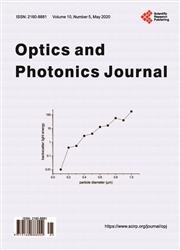Calculation of the Nonlinear Susceptibility in van der Waals Crystals
引用次数: 2
Abstract
The development of theoretical models for crystals has led to the evolution of computational methods with which much more thorough investigations than previously possible can be done, including studies of the nonlinear optical properties. There has recently been a rise in interest in 2-dimensional materials; unfortunately, measurements of the nonlinear susceptibility of these materials in the wavelength range of the order of hundreds of nanometers by traditional methods are difficult. Studies of second-harmonic generation (SHG) from the transition-metal dichalcogenides (TMDCs), MoS2 and MoSe2, have been reported; however, SHG from other typical van der Waals crystals such as GaSe and other transition metal monochalcogenides (TMMCs) has rarely been studied under the same conditions. In this study, the 211 (i = 2, j = 1, k = 1) elements in the susceptibility matrices of GaSe, InSe, MoS2 and WS2 were calculated and compared. A tendency for the SHG intensity to weaken as the wavelength increases from 500 nm to 1000 nm was observed for GaSe and InSe, and, apart from some periodic fluctuations, no clear increase could be seen for these two materials in the SHG response curve in the near infrared. By comparison, MoS2 and WS2 have obvious peaks in both the visible and infrared bands. Calculations of the SHG response show peaks at around 500 nm (for GaSe), 570 (for InSe), 660 nm, 980 nm (for MoS2) and 580 nm, 920 nm (for WS2). Moreover, similarities between the SHG curves for GaSe and InSe and for MoS2 and WS2 were revealed, which may be due to the similarities found for these two groups of crystals.范德华晶体非线性磁化率的计算
晶体理论模型的发展导致了计算方法的演变,使我们可以进行比以前更彻底的研究,包括非线性光学性质的研究。最近人们对二维材料的兴趣有所上升;不幸的是,用传统方法测量这些材料在数百纳米波长范围内的非线性磁化率是困难的。过渡金属二硫族化合物(TMDCs) MoS2和MoSe2产生二次谐波(SHG)的研究已被报道;然而,其他典型的范德华晶体,如GaSe和其他过渡金属单硫族化合物(TMMCs)的SHG很少在相同的条件下进行研究。本研究对GaSe、InSe、MoS2和WS2的磁化率矩阵中的211 (i = 2, j = 1, k = 1)个元素进行了计算和比较。GaSe和InSe的SHG强度随波长从500 nm增加到1000 nm有减弱的趋势,除了一些周期性波动外,这两种材料在近红外的SHG响应曲线上没有明显的增加。相比之下,MoS2和WS2在可见光和红外波段都有明显的峰。SHG响应的计算表明,峰值在500 nm (GaSe), 570 nm (InSe), 660 nm, 980 nm (MoS2)和580 nm, 920 nm (WS2)左右。此外,还发现了GaSe和InSe以及MoS2和WS2的SHG曲线的相似性,这可能是由于这两组晶体的相似性。
本文章由计算机程序翻译,如有差异,请以英文原文为准。
求助全文
约1分钟内获得全文
求助全文

 求助内容:
求助内容: 应助结果提醒方式:
应助结果提醒方式:


